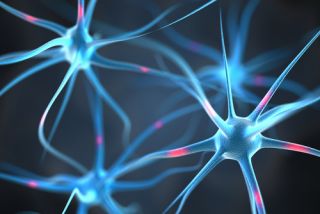Education
Build Your Young Child’s Future School Success NOW
Things to do together to build childrens' learning skills before school starts
Posted June 27, 2015
Build Your Young Child’s Future School Success
with Things You Do Together NOW

Patterning allows the brain to store information and add new learning to existing categories. Prediction occurs when the brain has enough information in a clustered memory category so that it can find similar patterns in new information. This permits the brain to predict the meaning of the patterns in new words allowing a gateway to pronunciation and understanding. In arithmetic, the understanding of patterns lets you see the number sequence 3,6,9,12…, and predict the next number will be 15 as you recognize the grouping of counting by threes.
Through careful observation, the brain continually learns about our world and stores the information in memory based on relationships (recognized patterns of things that are experienced together or mentally connected). These relational patterns are how the brain makes predictions about what will come next, how to respond to questions, what past knowledge is useful for new situations.
Prediction is often the key measurement in intelligence tests. This predicting ability based on perceived patterns provides the basis for successful reading, calculating, test taking, goal setting, and appropriate social behavior. Successful prediction is one of the best problem-solving strategies the brain has. Activities allowing your child to recognize, play with, and create patterns build his power of prediction.
Helping young children build their patterning skills supports their future ability to recognize and remember the patterns found in letters, words, and sentence structures. Below are examples of activities that allow your child to establish patterns through sorting, categorizing, and matching games.
Patterning by Sorting into Categories

The patterning skills needed for reading are further extended when your child’s brain can associate novelty with a combination into which it could fit. When categorizing or sorting, the brain scans its memories for a pattern it can use to predict the meaning of something unfamiliar. This pattern matching takes place when the brain predicts (based on existing memory patterns) the sound of an unfamiliar letter or the meaning of an unknown word.
The following activities prepare the brain for this aspect of reading by building her skills of pattern identification:
Start with sorting of objects into obvious categories, such as a collection of pictures or small plastic animals or vehicles. Ask your child to sort the items into categories and give names to each category. (Verbalizing the name she selects for a category increases the brain’s awareness of the pattern. Ask your child why she selected the category name or what information she used when sorting items the way she did.)
When children are proficient with these obvious categories, they can move to more subtle items to categorize. You can make map of the rooms of the house and place it on a table or the floor. Make a game of bringing items related to specific rooms on a tray to the map and having your child place each item in the appropriate room on the map – and saying the name of that room.
A treasure hunt at home or in the park creates a game to seek items that are in the same category such as things alive, broken, very big, very little, etc.
Finding patterns
Drawing attention to patterns in art, nature, and daily recurrent occurrences help children build pattern recognition skills. Ask your child to lead you around the house and point to all things that are circle shaped (or square, etc.).
On a familiar walk or even walk about their rooms invite your child to think of a group and point to things that fit it, such as items that are blue colors, square shapes or favorite toys. You then guess his pattern by making predictions. For example, if you recognize the pattern as toys, walk to another toy and ask, “Is this in your pattern?” Take turns as pattern selector and pattern predictor. The complexity of the pattern can be increased to include more specific categories such as long pants, things that roll, shoes that have laces, etc. Children will also enjoy doing this activity in the park or on a walk.
Guess My Category
In this activity, your child decides the categories, sorts the figures, and has you guess the pattern of things taken from his collection of small toys, plastic animals, or toy vehicles. Toy categories might include zoo, farm, or pet animals; objects that are hard or soft; or things that move people, such as toy cars, trucks, bicycles, and busses. When you guess, explain your reasoning to your child. This will prepare him for the next activity.
What Belongs? What Doesn’t Belong?

To increase the challenge and build more connections to the way words and letters form patterns, group together three items with a shared characteristic and have your child describe what they have in common. Next, group together three items that are in the same category and include one that does not belong. Have your child select the one that does not belong and explain why.
When your child becomes proficient with these more obvious categories, create increasingly complex groupings. For example, if you first sort coins into groups of pennies, nickels, and dimes, and your child recognizes that a dime does not belong with the pennies, you can progress to pattern sequences. Line up a sequence penny-penny-dime, penny-penny-dime, penny-penny-dime. Ask you child to choose the next three coins that would fit with the pattern you set up. This builds both patterning skills for reading and sequencing skills for number sense, or numerancy, the basis for learning arithmetic.
Observe a pattern you play on a piano or other instrument. Then they can demonstrate that they recognize the pattern by copying the movements of your fingers and touching the same piano keys in the same order you did. As your child advances, he can try to sing or play the next note in the sequence. Start easy, just playing the white keys left to right, singing notes in a scale, or singing the first few notes of a familiar song. Gradually build up to more complex patterns, such as playing every third key or singing a pattern of the same note sung soft-soft-loud-soft-soft-loud or short-short-long, short-short-long. Then switch roles and let your child create the pattern for you to predict or continue.
Color detective
As you drive together in the car, have your child say “red” each time he sees a red car. Then ask him to be on the lookout for another color.
What’s missing?
Place a few household objects on a tray, and allow your child to examine them. Then ask him to close his eyes as you remove an object. When he opens his eyes, have him try to recall which object is missing. Gradually increase the number of objects on the tray as his skill improves.
Similarities and Differences

When your child has mastered large pattern similarities and differences such as red or black cars or trucks or cars, try engaging in the following activity. While driving in the car, ask your child to point to cars that are four door or those that are two door, houses that have flat roofs or pointy roofs, or signs that are all capital letters or signs with both lowercase and capital letters.
This game becomes more complex and expands comparison-and-contrast aspects of pattern recognition when you encourage your child to tell you other similarities and differences he notices: between two cars, houses, leaves, dogs, family photos, or photos of himself at different ages. For the photo activity, find two photographs of your child taken about a year apart. Have him tell you all the details he finds in each of them. Ask him which picture was taken when he was older and how he can tell.
………




